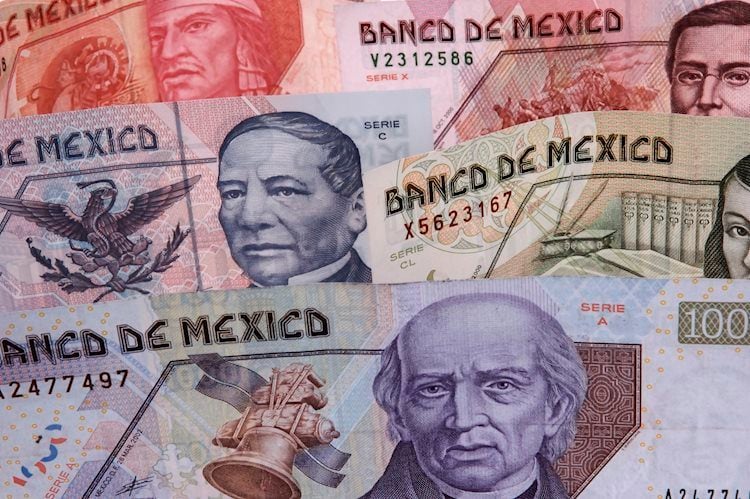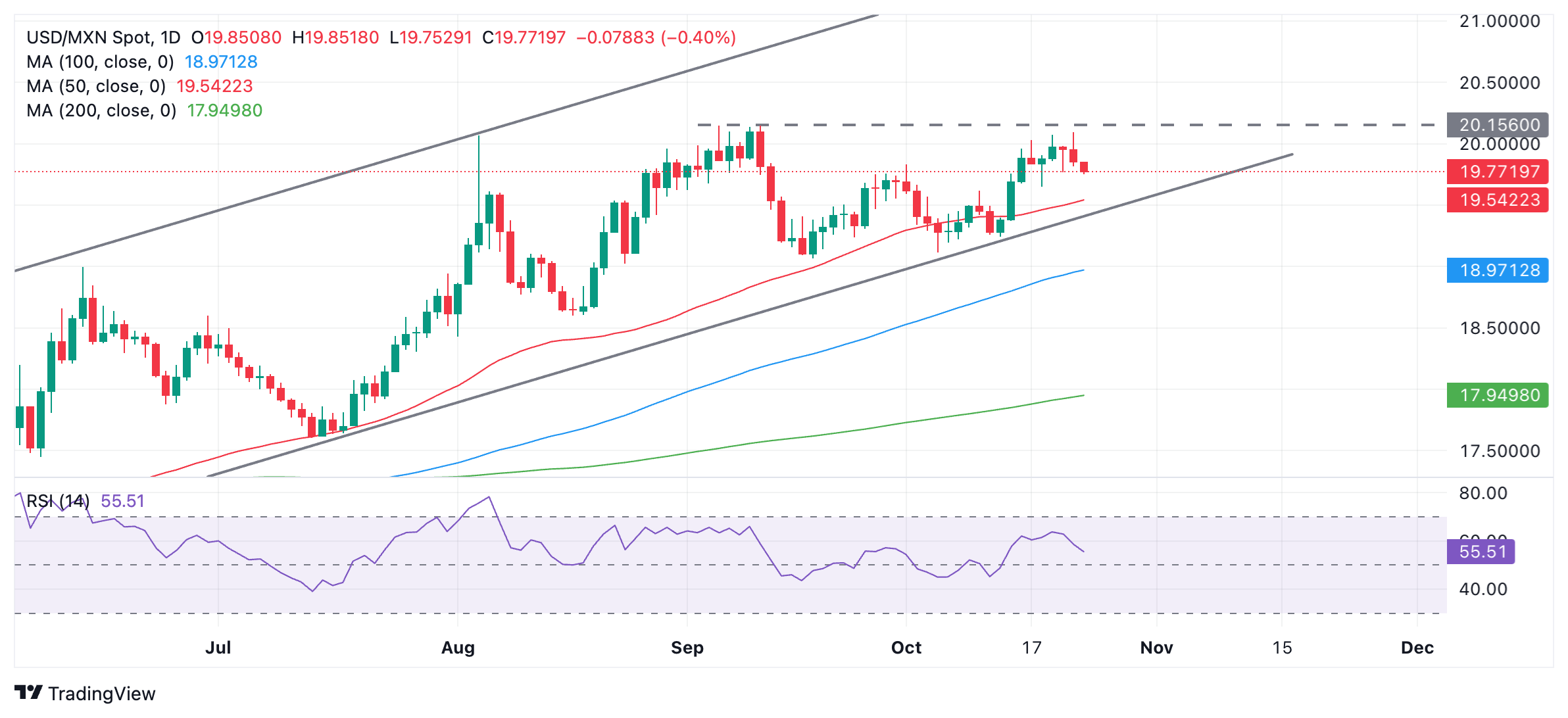- The Mexican Peso executes a technical bounce and rises despite negative fundamentals.
- The move could be technically inspired or as a result of a revival in carry flows due to the weakening Yen.
- USD/MXN pulls back after testing the 20.00 hurdle. The pair remains in a broader uptrend.
The Mexican Peso (MXN) edges higher on Thursday following a reversal on Wednesday, in which it first fell to a one-month low against the US Dollar (USD) but then reversed – partly due to technical buying – and recovered by an average of about half a percent in its most heavily-traded pairs – the USD/MXN, EUR/MXN and GBP/MXN. A revival of the carry trade due to the recent depreciation in the Japanese Yen (JPY) might be a further factor in the Peso’s recovery.
Mexican Peso recovers: Potential revival of the carry trade?
The Mexican Peso executed a surprising volte face in its key pairs on Wednesday and builds on the rebound on Thursday. One possible explanation for the recovery, given MXN’s negative fundamentals, is the weakness experienced by the Japanese Yen, which could be reviving investor interest in the carry trade and, as a result, raising demand for the Peso.
The Mexican currency tends to be a key beneficiary of carry flows because of its relatively high interest rates offered to depositors in Mexico, influenced by The Bank of Mexico’s (Banxico) cash rate, which is 10.50%. This compares to only 0.25% in Japan, where interest rates are stuck at low levels due to endemic deflation.
The carry operation involves borrowing capital in a low-interest currency, such as the Japanese Yen, and using the money to buy a higher interest-paying alternative, such as the Mexican Peso. The difference between the cost of servicing the Yen-denominated loan and the interest earned on the MXN investment generates a profit (10.50% – 0.25% = 10.25%), assuming no change in the exchange rate. If the Yen weakens or the Peso strengthens, however, the carry trade becomes even more profitable.
Mexican Peso still vulnerable to bearish fundamentals
Despite possible gains from the carry flows, the Mexican Peso remains vulnerable to multiple bearish fundamental factors.
Data released this week painted a gloomy picture of the Mexican economy after both Economic Activity and Retail Sales fell sharply in August. This reinforces the negative economic outlook forecast by the IMF for Mexico in its recent reports for 2024 and 2025.
Weak growth will likely weigh on the Mexican Peso and pressure Banxico to lower interest, which would reduce foreign capital inflows.
Uncertainty over the outcome of the US election is a further negative factor for the Peso now that former President Donald Trump has bounced back after falling behind in the polls. Trump has said he will use tariffs to limit foreign imports, particularly of Mexican-made cars, which would be negative for the Peso. According to election website FiveThirtyEight.com, the latest poll held by Forbes on October 21-22 put Trump one point ahead on 49%, versus Vice President Kamala Harris’s 48%.
Technical Analysis: USD/MXN pulls back but momentum remains with bulls
USD/MXN is pulling back after flirting with the 20.00 level. However, it overall remains in an uptrend within a rising channel, which, given the technical dictum “the trend is your friend,” is eventually likely to resume and push the price to higher highs.
USD/MXN Daily Chart
The Relative Strength Index (RSI) indicator in the daily chart remains relatively elevated, signaling momentum remains bullish. At the moment, this further supports the view that the pullback will only be a temporary stumbling block for the uptrend before it resumes its upside bias.
The break above 19.83 (October 1 high) has confirmed a probable move up to the next target in the vicinity of the September 10 high at 20.13.
Mexican Peso FAQs
The Mexican Peso (MXN) is the most traded currency among its Latin American peers. Its value is broadly determined by the performance of the Mexican economy, the country’s central bank’s policy, the amount of foreign investment in the country and even the levels of remittances sent by Mexicans who live abroad, particularly in the United States. Geopolitical trends can also move MXN: for example, the process of nearshoring – or the decision by some firms to relocate manufacturing capacity and supply chains closer to their home countries – is also seen as a catalyst for the Mexican currency as the country is considered a key manufacturing hub in the American continent. Another catalyst for MXN is Oil prices as Mexico is a key exporter of the commodity.
The main objective of Mexico’s central bank, also known as Banxico, is to maintain inflation at low and stable levels (at or close to its target of 3%, the midpoint in a tolerance band of between 2% and 4%). To this end, the bank sets an appropriate level of interest rates. When inflation is too high, Banxico will attempt to tame it by raising interest rates, making it more expensive for households and businesses to borrow money, thus cooling demand and the overall economy. Higher interest rates are generally positive for the Mexican Peso (MXN) as they lead to higher yields, making the country a more attractive place for investors. On the contrary, lower interest rates tend to weaken MXN.
Macroeconomic data releases are key to assess the state of the economy and can have an impact on the Mexican Peso (MXN) valuation. A strong Mexican economy, based on high economic growth, low unemployment and high confidence is good for MXN. Not only does it attract more foreign investment but it may encourage the Bank of Mexico (Banxico) to increase interest rates, particularly if this strength comes together with elevated inflation. However, if economic data is weak, MXN is likely to depreciate.
As an emerging-market currency, the Mexican Peso (MXN) tends to strive during risk-on periods, or when investors perceive that broader market risks are low and thus are eager to engage with investments that carry a higher risk. Conversely, MXN tends to weaken at times of market turbulence or economic uncertainty as investors tend to sell higher-risk assets and flee to the more-stable safe havens.

